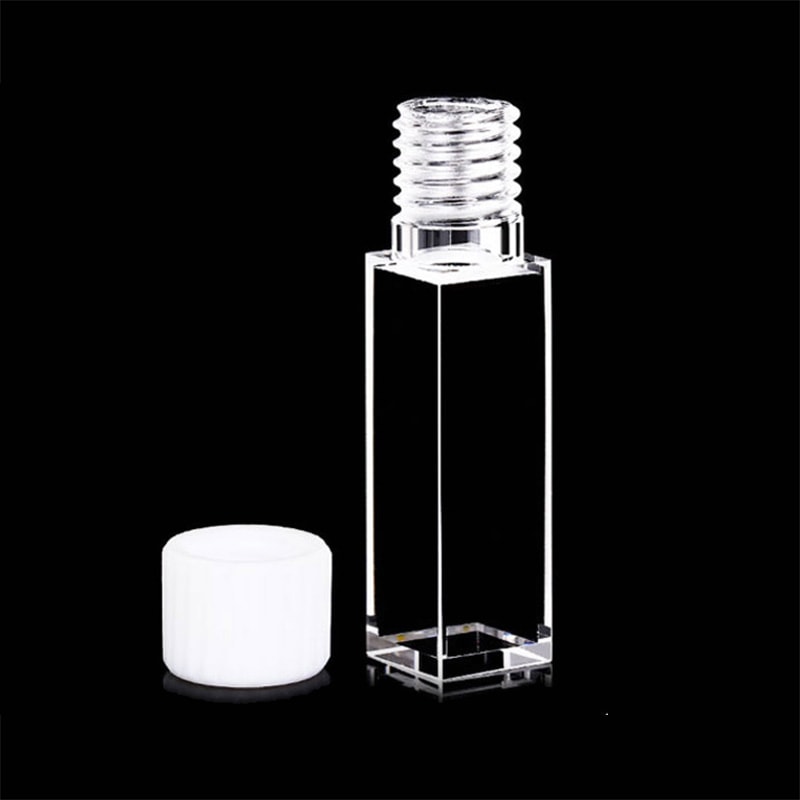The spectrophotometry procedure is the foundation of scientific discovery. It reveals the secrets of the absorption of light and transmission across certain wavelengths. Cuvettes are the core of spectrophotometry. It’s an easy yet vital container used to keep samples in place for analysis. They may seem straightforward, but their intricacies, from cuvette length and material selection, hold the key to unlocking accurate information on the concentration of substances and their quality. Let’s explore this fascinating realm where the dimensions and cuvette size affect the results of each experiment.
Power of Cuvette Path length
Imagine a light beam passing through a sample what happens depends heavily on the cuvette path length which is the length of time light travels through the liquid. For many labs, a cuvette with 1 centimeter length is best because it strikes the balance between sensitivity and well as practicality. What is the significance of this? The longer the length of the light path more of light that is being absorbed. Thus, the light signal is amplified when using dilute samples. A shorter path can make an enormous difference in highly concentrated solutions, such as proteins or nucleic acids. This helps reduce dilution and protect precious samples, as well as cutting down on the time needed to prepare. What’s the primary takeaway from this? The art of matching path length with requirements for samples is not as obvious, but it improves reliability.

Image credit: cuvet.co
Cuvette Dimensions and Size Cuvette Dimensions and Size: There’s More Than You Think
The size of the cuvette isn’t just about how much liquid it can hold however, it also determines how it works with the instrument. These containers come in a assortment of shapes and volumes which are suited to particular requirements. Semi-micro cuvettes for instance are smaller in size and thicker wall thicknesses, are made to handle small volumes of samples. Imagine a few nanoliters, or perhaps a rare biological extraction. They have thick walls that allow light to pass through the sample, without wasting even a single drop. If you compare this to a cuvette standard it is a stark contrast that there are fewer steps to pipette, fewer errors, and outcomes that are long-lasting. It’s a clever modification that makes it clear that size isn’t just an number but rather a method of doing business.
The 1cm Path Length Cuvette A Lab Favorite
Why does the 1 cm path length cuvette reign supreme in so many experiments? It’s the best for biological measurement, since samples are often scarce and every milliliter is worth a lot. This design is a classic and provides the same absorbance measurement without overloading the detector. This is not a hero for all scenarios. Change it out for one with a different path length or a geometry similar to one designed for research on emissions and the results can shift wildly. It is essential to choose the appropriate instrument, not one you are comfortable with. A mis-matched cuvette can be compared to an instrument that is tuned incorrectly but not completely correct.
Material Matters Beyond Size and Path
Cuvette dimensions are only a small part of the tale. The selection of the material is the final piece. Quartz and glass cuvettes are famous for their excellent rate of light transmission. They’re durable, reusable and ideal for spectroscopy. On the other hand plastic cuvettes can bring value and ease of use to the table. Utilize them and dispose of them. There’s no need to wash, no risk of cross contamination. These are excellent for testing in aqueous fluids or speedy DNA/RNA tests. What’s the price to pay? less accuracy in certain wavelengths. It’s a classic instance of purpose, dictating quartz for the purists and plastic for the pragmatic.
Accuracy in Practice
Cuvettes’ flexibility is what makes them attractive. With spacers, short paths are able to deal with concentrated sample. Larger vessels are to handle larger volumes. Each choice of path size and length as well as the type of material will have an effect on the test. This can affect how clear the final result is. Think about a lab that measures a rare protein: A semi-micro cuvette that has the shortest path can avoid dilution headaches, delivering trustworthy results quickly. Compare this with a careless swap of cuvettes mid-experiment, and the results are shaky. Small details make the greatest impact on spectrophotometry.
Cuvettes aren’t huge, yet they play a big role. From the 1 cm path length cuvette, to custom-designed dimensions that bridge the gap between sample and insight. A cuvette that is right for you can transform the quality of a measurement, whether you’re looking for concentration or purity and precision, into a fantastic measurement.